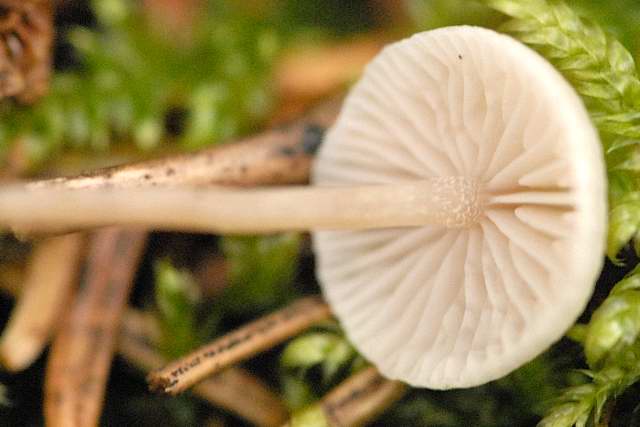|
Collybia
''Collybia'' (in the strict sense) is a genus of mushrooms in the family Tricholomataceae. The genus has a widespread but rare distribution in northern temperate areas, and contains three species that grow on the decomposing remains of other mushrooms. Until recently a large number of other white-spored species, some very common, were assigned to this genus, but now the majority have been separated into other genera: ''Gymnopus'', '' Rhodocollybia'' and '' Dendrocollybia''. ''Collybia'' sensu lato ''Collybia'' sensu lato is one of the groups of fungi of the order Agaricales that has created taxonomic differences of opinion in the scientific community. The generic name ''Collybia'' is due to Elias Magnus Fries and first appeared in 1821. ''Collybia'' was originally a tribe from an Agaricus classification. In 1857, Friedrich Staude recognized ''Collybia'' as a genus. The name ''Collybia'' means "small coin". Later in his systematic work of 1838, Fries characterized ''Collybia' ... [...More Info...] [...Related Items...] OR: [Wikipedia] [Google] [Baidu] |
Collybia Cirrhata
''Collybia cirrhata'' is a species of fungus in the family Tricholomataceae of the order Agaricales (gilled mushrooms). The species was first described in the scientific literature in 1786, but was not validly named until 1803. Found in Europe, Northern Eurasia, and North America, it is known from temperate, boreal, and alpine or arctic habitats. It is a saprobic species that grows in clusters on the decaying or blackened remains of other mushrooms. The fruit bodies are small, with whitish convex to flattened caps up to in diameter, narrow white gills, and slender whitish stems long and up to thick. ''C. cirrhata'' can be distinguished from the other two members of ''Collybia'' by the absence of a sclerotium at the base of the stem. The mushroom, although not poisonous, is considered inedible because of its insubstantial size. Taxonomy and phylogeny The species first appeared in the scientific literature in 1786 as ''Agaricus amanitae'' by August Johann Georg Karl B ... [...More Info...] [...Related Items...] OR: [Wikipedia] [Google] [Baidu] |
Collybia Cookei
''Collybia cookei'' is a species of fungus in the family Tricholomataceae, and one of three species in the genus ''Collybia''. It is known from Europe, Asia, and North America. The fungus produces fruit bodies that usually grow on the decomposing remains of other mushrooms, like ''Meripilus giganteus'', ''Inonotus hispidus'', or species of ''Russula''; occasionally fruit bodies are found on rich humus or well-decayed wood. The fungus produces small white mushrooms with caps up to in diameter, supported by thin stems that originate from a yellowish-brown sclerotium. The mushroom is difficult to distinguish from the other two species of ''Collybia'' unless an effort is made to examine the sclerotia, which is usually buried in the substrate. The edibility of the mushroom has not been determined. Taxonomy and phylogeny The species was first described in the scientific literature in 1928 as ''Collybia cirrhata'' var. ''cookei'' by the Italian mycologist Giacomo Bresadola. In a ... [...More Info...] [...Related Items...] OR: [Wikipedia] [Google] [Baidu] |
Dendrocollybia
''Dendrocollybia'' is a fungal genus in the family Tricholomataceae of the order Agaricales. It is a monotypic genus, containing the single species ''Dendrocollybia racemosa'', commonly known as the branched Collybia or the branched shanklet. The somewhat rare species is found in the Northern Hemisphere, including the Pacific Northwest region of western North America, and Europe, where it is included in several Regional Red Lists. It usually grows on the decaying fruit bodies of other agarics—such as ''Lactarius'' and ''Russula''—although the host mushrooms may be decayed to the point of being difficult to recognize. ''Dendrocollybia racemosa'' fruit bodies have small pale grayish-white or grayish-brown caps up to wide, and thin stems up to long. The species is characterized by its unusual stem, which is covered with short lateral branches. The branches often produce spherical slimeheads of translucent conidiophores on their swollen tips. The conidiophores produce conidia ... [...More Info...] [...Related Items...] OR: [Wikipedia] [Google] [Baidu] |
Collybia Tuberosa
''Collybia tuberosa'', commonly known as the lentil shanklet or the appleseed coincap, is an inedible species of fungus in the family Tricholomataceae, and the type species of the genus ''Collybia''. Like the two other members of its genus, it lives on the decomposing remains of other fleshy mushrooms. The fungus produces small whitish fruit bodies with caps up to wide held by thin stems up to long. On the underside of the cap are closely spaced white gills that are broadly attached to the stem. At the base of the stem, embedded in the substrate is a small reddish-brown sclerotium that somewhat resembles an apple seed. The appearance of the sclerotium distinguishes it from the other two species of ''Collybia'', which are otherwise very similar in overall appearance. ''C. tuberosa'' is found in Europe, North America, and Japan, growing in dense clusters on species of ''Lactarius'' and ''Russula'', boletes, hydnums, and polypores. Taxonomy, phylogeny, and naming The s ... [...More Info...] [...Related Items...] OR: [Wikipedia] [Google] [Baidu] |
Collybia Tuberosa 65840
''Collybia'' (in the strict sense) is a genus of mushrooms in the family Tricholomataceae. The genus has a widespread but rare distribution in northern temperate areas, and contains three species that grow on the decomposing remains of other mushrooms. Until recently a large number of other white-spored species, some very common, were assigned to this genus, but now the majority have been separated into other genera: ''Gymnopus'', '' Rhodocollybia'' and ''Dendrocollybia''. ''Collybia'' sensu lato ''Collybia'' sensu lato is one of the groups of fungi of the order Agaricales that has created taxonomic differences of opinion in the scientific community. The generic name ''Collybia'' is due to Elias Magnus Fries and first appeared in 1821. ''Collybia'' was originally a tribe from an Agaricus classification. In 1857, Friedrich Staude recognized ''Collybia'' as a genus. The name ''Collybia'' means "small coin". Later in his systematic work of 1838, Fries characterized ''Collybia'' ... [...More Info...] [...Related Items...] OR: [Wikipedia] [Google] [Baidu] |



